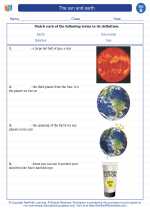Potential Energy
Potential energy is a form of energy that an object possesses due to its position or state. It is the energy that an object has the potential to release and convert into other forms of energy, such as kinetic energy (the energy of motion).
Types of Potential Energy
There are several types of potential energy:
- Gravitational Potential Energy: This is the energy stored in an object due to its position in a gravitational field. The higher an object is above the ground, the greater its gravitational potential energy.
- Elastic Potential Energy: This is the energy stored in objects such as springs, rubber bands, or other elastic materials when they are stretched or compressed.
- Chemical Potential Energy: This is the energy stored in the chemical bonds of molecules. When chemical reactions occur, this energy can be released in the form of heat or light.
- Nuclear Potential Energy: This is the energy stored in the nucleus of an atom. Nuclear reactions can release this energy in the form of nuclear power or nuclear explosions.
Calculating Potential Energy
The gravitational potential energy of an object near the Earth's surface can be calculated using the formula:
PE = mgh
Where:
- PE = gravitational potential energy (in joules)
- m = mass of the object (in kilograms)
- g = acceleration due to gravity (approximately 9.81 m/s2 near the Earth's surface)
- h = height above the reference point (in meters)
Examples of Potential Energy
Here are some examples of potential energy in everyday situations:
- A book sitting on a shelf has gravitational potential energy due to its position above the ground.
- A stretched rubber band has elastic potential energy.
- Food has chemical potential energy stored in its molecules, which is released during digestion.
- Nuclear power plants generate electricity by converting nuclear potential energy into electrical energy.
Study Guide
To study potential energy, make sure to understand the different types of potential energy, how to calculate gravitational potential energy, and how potential energy is converted into other forms of energy. Practice solving problems using the potential energy formula and identify examples of potential energy in everyday life.
Understanding potential energy is important in understanding the behavior of objects and the various energy transformations that occur in the natural world.
.◂Science Worksheets and Study Guides Second Grade. The sun and earth

 Activity Lesson
Activity Lesson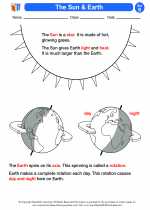
 Worksheet/Answer key
Worksheet/Answer key
 Worksheet/Answer key
Worksheet/Answer key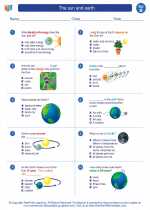
 Worksheet/Answer key
Worksheet/Answer key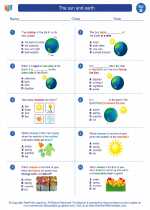
 Worksheet/Answer key
Worksheet/Answer key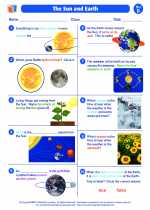
 Vocabulary/Answer key
Vocabulary/Answer key